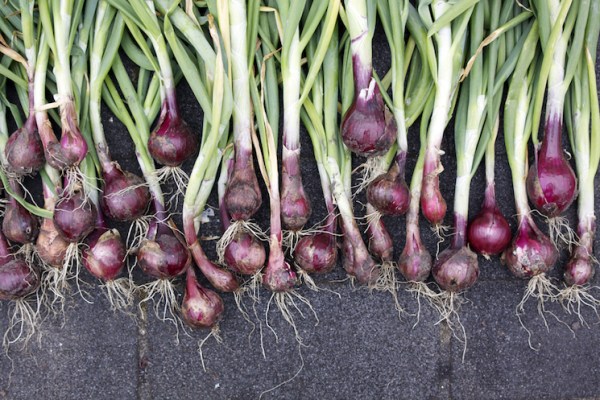
Image source: MelashaCat
As the summer fades into autumn and the weather gets colder, it’s tempting to pack up the vegetable garden and retreat indoors. But this means missing out on a range of crops that you can harvest over winter, or that give you a great head start on next season.
Some vegetable plants need a spell of cold to be at their best, while others can be tricked into thinking that temperatures are higher by putting them into a greenhouse or cold frame.
There’s so much to do by the time spring arrives that it makes sense get ahead at a quieter time of year. And there’s nothing better than the sight of some full veg beds to lift the gloom of midwinter. Here are just some of the vegetables I’ll be growing this autumn…
Onions

Image source: Naffarts
Members of the allium family are top of my list when it comes to autumn-planted vegetables. They can be planted in the spring, but starting now gives you something to harvest weeks before other crops are ready. Red onions are a great choice because they’re often expensive to buy and are good to eat raw or cooked.
I like to use onion sets, as it’s much less time consuming than sowing seeds. It’s also possible to buy heat-treated sets, which are less likely to bolt. Sets also have the advantage of being quick to plant – just make sure you protect them from birds, who like to pull them up.
Shallots can also be started off in autumn and will be ready to harvest in late June. They don’t store as well as the spring-planted crops, but keep me going until later varieties are ready.
Garlic

Image source: Sarycheva Olesia
Garlic is another member of the allium clan that I like to plant in late autumn – the bulbs certainly seem bigger than those planted in spring.
Do buy from a reputable supplier rather than using supermarket-bought garlic. That way you’re able to make sure you get something that’s disease-free and suited to the UK climate.
Broad Beans

Image source: Shutterstock
Broad beans are so much better home-grown as they need to be fresh-picked and harvested small.
To get the earliest crop in May, choose an over-wintering variety and sow in late autumn. Either sow direct into the ground, or into modules for planting out. I prefer sowing into modules, as I can then guard against mice and other seedling stealers. Watch out for particularly cold weather, and be ready to cover plants with cloches or fleece if it comes.
More seed can be sown in February for planting out in spring, and I usually follow that up with another couple of batches to keep the harvest going, swapping between varieties to get the best results.
Spinach

Image source: Snezana Ignjatovic
Planting winter spinach is a great way of having something to pick in late autumn and avoiding the problem of it bolting in heat. Sow some in August and more in September and choose a sunny site.
In the south, where I live, spinach rarely needs protection, but in exposed or colder gardens, use a cloche to keep the plants warm enough to continue growing. Pick tiny young leaves to use raw in salads, or let them grow older and bigger for steaming.
Spring cabbage

Image source: ChameleonsEye
Spring cabbage should also be started now – again I prefer to do this in modules to protect the young plants against pests.
I start them off in August and plant them out in October ready for picking in late March. If you’re in a cold spot, give them some winter protection and do guard against hungry pigeons.
Harvest the leaves as greens, or let the plants grow into loose hearts – they’re far tastier than the usual cabbage.
Salad

Image source: Peter Turner Photography
Finally, it’s easy to think of lettuce as just a summer crop but there are winter lettuce varieties that are worth sowing now in a cold greenhouse, cold frame or under cloches.
Sow them in August and you’ll be picking from April – weeks earlier than spring-sown crops.
Add some lamb’s lettuce, peppery rocket, land cress and mustard as cut-and-come-again leaves to bring a bit of spice to your winter sandwiches and salads.
